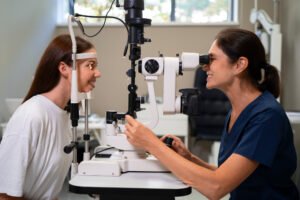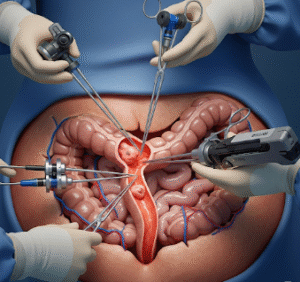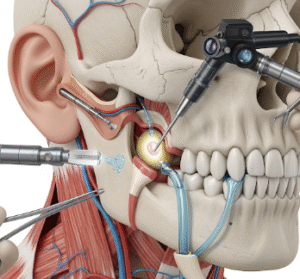Overview
Escherichia coli (E. coli) is a type of bacteria that naturally lives in the intestines of humans and animals. While most strains are harmless and even play a role in digestion, some can cause serious foodborne illness. In Korea, E. coli infections are relatively rare due to strict food safety laws, high hygiene standards, and advanced medical care, but outbreaks can still occur through contaminated food, unpasteurized products, or unsafe water sources.
Public health authorities in Korea, such as the Korea Disease Control and Prevention Agency (KDCA), actively monitor and respond to E. coli outbreaks to prevent widespread infections. Hospitals are well-equipped with modern diagnostic technology, making Korea one of the safest countries in Asia for managing bacterial infections.
What is E. coli Infection?
E. coli infection refers to illness caused by harmful strains of the bacterium Escherichia coli. The most dangerous strain is E. coli O157:H7, which produces a powerful toxin called Shiga toxin that can damage the lining of the intestines. This condition is sometimes called Shiga toxin-producing E. coli (STEC) infection.
Most infections result in gastrointestinal illness such as diarrhea, but severe cases may lead to hemolytic uremic syndrome (HUS), a condition that can cause kidney failure, especially in children and elderly patients.
Symptoms
Symptoms usually appear 3 to 4 days after exposure, though they can start as early as 1 day or as late as 10 days. Common signs include:
- Digestive symptoms:
- Severe abdominal cramps
- Watery or bloody diarrhea
- Nausea and vomiting
- Loss of appetite
- Systemic symptoms:
- Low-grade fever (not always present)
- Fatigue and weakness
- Headaches
- Severe complications (in advanced cases):
- Decreased urine output
- Pale skin
- Swelling in face, hands, or feet (signs of kidney involvement)
Causes
E. coli infections spread mainly through the fecal-oral route, meaning bacteria from contaminated food, water, or surfaces enter the digestive system. Major causes include:
- Eating undercooked ground beef
- Drinking unpasteurized milk, cheese, or fruit juices
- Consuming contaminated vegetables and fruits (especially leafy greens)
- Drinking or swimming in contaminated water
- Person-to-person contact, especially in daycare centers
- Poor hand hygiene after using the bathroom or handling animals
Risk Factors
Certain groups of people are more vulnerable to E. coli infections:
- Children under 5 years old – highest risk of severe complications
- Older adults – weakened immunity increases risk
- People with chronic illnesses – such as diabetes, kidney disease, or immune suppression
- Travelers – visiting areas with poor sanitation
- People consuming high-risk foods – raw vegetables, undercooked meat, or unpasteurized dairy
Complications
Although many cases resolve within a week, serious complications may occur, including:
- Hemolytic uremic syndrome (HUS) – a life-threatening condition that causes kidney failure, anemia, and low platelets
- Severe dehydration – from prolonged diarrhea and vomiting
- Intestinal damage – long-term issues with digestion
- Sepsis (blood infection) – rare but possible in severe cases
- Chronic kidney disease – in patients who suffer kidney injury during infection
Prevention
Korea emphasizes food safety and hygiene education to minimize the risk of infection. Preventive measures include:
- Cooking meat thoroughly, especially ground beef
- Avoiding unpasteurized milk, cheese, and juices
- Washing fruits and vegetables carefully
- Using clean and safe water for drinking and cooking
- Practicing good hand hygiene, particularly before meals and after using the restroom
- Preventing cross-contamination in kitchens by keeping raw and cooked foods separate
Treatment Options in Korea
South Korea provides world-class treatment for E. coli infections, with hospitals equipped to manage both mild and severe cases.
- Diagnosis
- Stool cultures and PCR testing for E. coli strains
- Blood tests to check for anemia, dehydration, and kidney damage
- Urine tests for kidney function
- Supportive Care
- Oral or intravenous rehydration therapy
- Electrolyte replacement to prevent imbalances
- Rest and dietary adjustments
- Medications
- Pain relievers for abdominal cramps
- Anti-nausea medications
- Antibiotics are generally not recommended for STEC infections, as they may worsen toxin release
- Hospitalization (for severe cases)
- Close monitoring of hydration and kidney function
- Blood transfusions if anemia develops
- Dialysis for patients who develop kidney failure from HUS
- Specialized Care in Korea
- Major hospitals such as Asan Medical Center, Seoul National University Hospital, and Samsung Medical Center provide advanced infectious disease care
- Specialized pediatric units for children at risk of complications
- Access to dialysis centers for kidney-related emergencies













